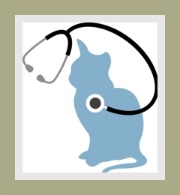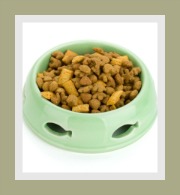Cat Flu
Causes, Symptoms and Treatment
Cat Flu is known by many names - snuffles, cat influenza and feline viral upper respiratory disease.
The disease is relatively complex and whilst there are a number of causal organisms, the most common are Feline Calicivirus (FCV) and Feline Herpes Virus (FHV) or Feline Rhinotracheitis.
Cats and kittens can be infected by either one or a combination of these viral infections.
The other offending organisms are Feline Chlamydia (chlamydia psittaci) and Reovirus and the the bacterial infections, which are generally considered secondary - Bordetella Bronchiseptica and Mycoplasma.
Essentially, cat influenza could be described as a range of diseases of bacterial and viral origin that affects both the upper and lower respiratory tracts.
The upper respiratory tract includes the larynx, pharynx and the trachea but the disease also affects the mouth, nose and eyes.
In certain instances, when the lungs and bronchi are involved, it is referred to as a lower respiratory tract infection.
cats at risk
Cat Flu is a highly contagious disease which is most often found in multi-cat households, boarding and breeding catteries and rescue shelters - in fact any environment where there is a high-density cat population.
Feral cats are possibly at greatest risk.
Un-vaccinated cats, young kittens (i.e. kittens under a year) and geriatric cats are all at risk of contracting this infectious feline respiratory disease.
Cats that are infected with the Feline Leukemia Virus (FeLV), Feline Immunodeficiency Virus (or Feline Aids)
or cats that are receiving chemotherapy for cancer all have suppressed
immune systems and are at risk of becoming infected.
common symptoms of cat flu
Symptoms will vary from cat to cat.
The severity of the symptoms will depend on a number of factors:
- like the cat's age - young kittens and old cats will be worst hit
- the state of the cat's immune system and the virus
responsible for causing the feline respiratory disease.
Generally, the feline herpes virus (FHV) causes more severe symptoms.
Feline Calicivirus (FCV), which has various strains, may cause a variety of symptoms dependent on the strain or may even be asymptomatic (no symptoms).
For specific symptoms related to FHV and FCV visit the chapters
dedicated to these viral infections - the symptoms below are considered
generic to both.
- Loss of appetite and lethargy
- Fever (high temperature)
- Persistent sneezing
- Inflamed, red and swollen eyes
- Watery discharge from the nose and eyes (as the disease progresses the discharge becomes muco-purulent)
- Difficulty in breathing due to blocked and crusted nostrils
- Inflamed tongue and mucous membranes of the mouth
- Coughing
It is important to isolate kittens and cats presenting with any of these symptoms (i.e. keep them separate from healthy cats).
Any cat that presents with any of these symptoms will need veterinary attention as soon as possible.
how is cat flu transmitted?
The Feline Calicivirus and Feline Herpes Virus are present in the saliva, nasal and eye discharges of infected cats.
When the infected cat sneezes, the viruses become airborne and can be inhaled by healthy cats.
Cats that have recovered from cat flu may become carriers of the disease.
Whilst these cats may not look ill, in times of stress, they will shed the virus and infect some unsuspecting cat.
The viruses are also spread by man by handling infected cats - hands and clothes play a major part in spreading the disease from cat to cat.
Cats sharing bedding, feeding bowls and cat toys also pose a risk in
terms of transmitting the virus.
cat flu diagnosis | treatment
Prior to treating the sick cat or kitten, the veterinary surgeon will take a full medical history from you, the pet owner.
Generally the vet will be able to diagnose cat flu by examining your cat.
In order to confirm the causal organism, he will need to take a throat swab and send it to the laboratory to identify whether it is Feline Herpes Virus or Calicivirus.
This is a viral infection and as such all treatment is symptomatic.
There is no specific medicine to 'cure' this feline disease.
Treatment
will also depend on the severity of the symptoms. Treatment may include
some or all of the following:
- The vet will in all likelihood prescribe a broad spectrum antibiotic to treat secondary bacterial infections.
- An eye ointment or drops may be prescribed to treat the eye infection.
- Saline eye wash is ideal to clean the eyes of crusts and mucus.
- Apply petroleum jelly (Vaseline) to the nose to
soften any crusts caused by nasal discharge and then wipe it off with
swabs dampened with luke-warm water.
- The nostrils and eyes must be cleaned of all discharge as often as required (3 - 4 times per day).
- Nasal decongestants may be prescribed to unblock the nose.
- Mucolytics will assist with breaking down and clearing any mucus in the respiratory tract.
- Anti-inflammatory drugs to assist with pain and inflammation.
- Clean the mouth with a veterinary prescribed mouth paint to treat and relieve the painful stomatitis.
- Prepare nourishing and appetizing food to encourage the cat to eat.
- Food and hydration are essential to
'build' the cat's strength and encourage recovery.
- The cat must be
kept hydrated.
If the cat does not eat or drink, an intravenous drip
may be given.
- In severe cases, naso-gastric feeding may be needed
too. (Naso-gastric feeding means the vet will pass a tube down the cat's
nose, into the stomach and then a liquid diet will be fed via this
tube. The vet will check that the tube is situated in the stomach and
not the lungs prior to commencing with the feeding).
- Dedicated pet
owners could patiently hand-feed their cat.
- The cat will need to be isolated from other cats and barrier nursed to prevent the disease from being transmitted to other cats.
- Intensive nursing will be required for some weeks.
- Keep kitty indoors and keep him warm and comfortable.
prognosis
If cat flu is diagnosed early and is treated immediately, the cat has an excellent chance of recovery.
If consistent and intensive nursing care is provided when the cat or kitten is critically ill, there is a good chance it will recover.
The mortality rate is highest amongst young kittens, geriatric cats and cats with suppressed immune systems.
Recovered cats may become carriers of the disease. (This means they will shed the virus, especially when they are stressed, but do not present with any symptoms).
Some cats that survive this disease do go on
to develop a life-long chronic rhinitis, which is often called
snuffles.
prevention of cat flu
Prevention is better than cure (and a lot less expensive).
Speak to your veterinary surgeon about feline vaccinations.
Related Pages:
Top of Cat Flu Page
Return to Feline Diseases
search our site
please like us
share our site
recommend on google
favorite pages





